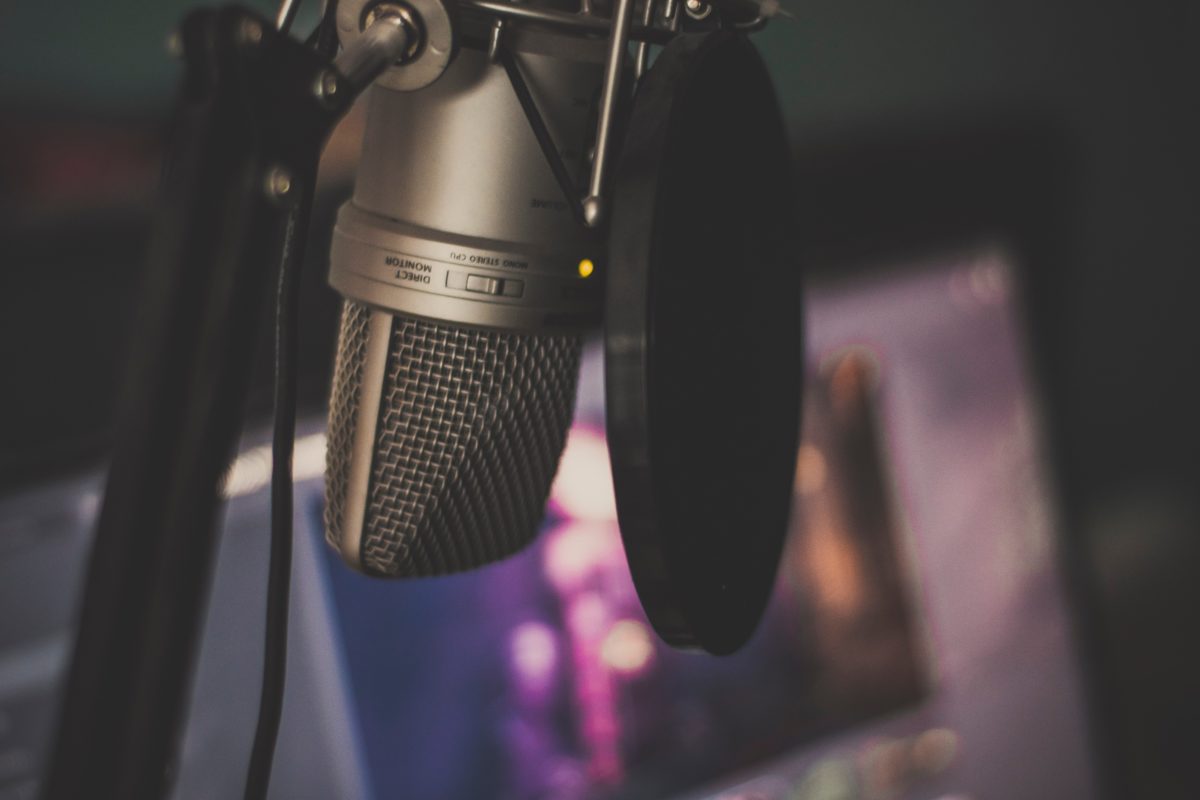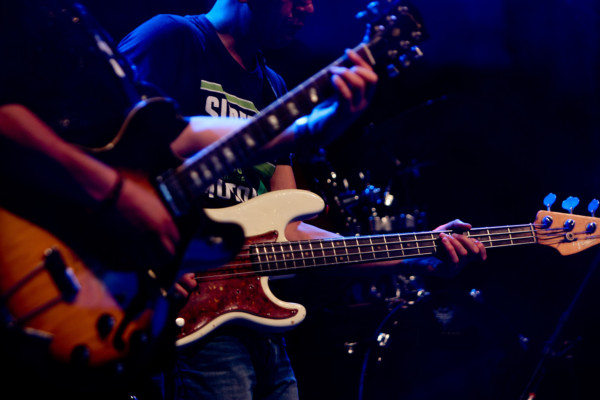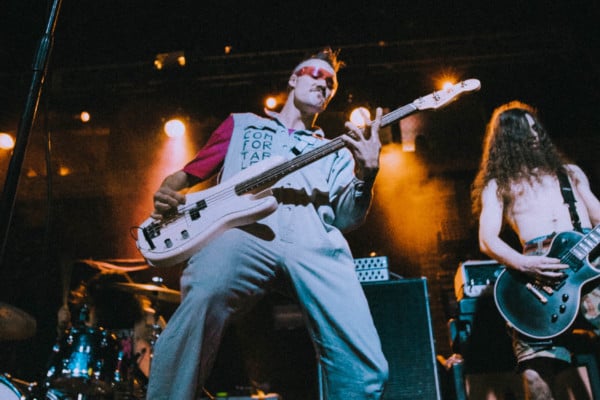The Lightbulb Moment: To Stream or Not To Stream?

That’s the question these days, right? And just so you know, I’m talking about live-streaming. I think most of us can agree that the streaming of music is here to stay… Apple, Spotify, and Amazon have made sure of that.
But to live-stream a performance? That’s a question that most of us probably never asked ourselves… until a worldwide pandemic shut down the live entertainment industry like an angry teenager slamming a bedroom door. (Note: this needed to happen, but that doesn’t mean that we can’t be mad about it).
Live-streaming has been going on for some time but it was never the predominant way of connecting with people. Now, it’s all the rage. Workplaces are live-streaming meetings and seminars, schools are live-streaming classes, and more and more musicians have jumped on board to live-stream performances. In many ways, there’s intense pressure to do this, whether or not you want to. It’s not the real thing, and it can’t truly take the place of live performance, but is it something that can be helpful to you (and to your mental health) during the age of social distancing?
As an audience member, tuning in to a live stream can provide a pleasant feeling of connection with an artist. The artist is likely performing from home and allowing you into their private world—a place that has typically been off-limits. It’s a rare and unusual treat to experience music so stripped down and, in some ways, far more intimate. And, while you’re not physically standing in a venue, you’re able to watch from the comfort of your home. You can enjoy a beverage, broadcast the show on your television, and enjoy the music without some loud, drunk person blocking your view. And, if you decide to financially support the artist, you’ll know that the money is going directly to them (or to the cause that they’re performing for). It’s not going to Ticketmaster or to the bar. It’s going to the artist.
As a performer, there are plenty of things to consider: is anyone going to tune in? Is it going to sound good? Is this something I even want to do? How could it compare to playing live?
As if that weren’t enough, bass players need to address the elephant in the room: most of us simply don’t perform on our own—we’re accompanists. We also have to deal with elements of technology and the fact that bass frequencies aren’t the friendliest when coming face to face with a phone mic. Oh, if only we sang and played acoustic guitar.
The fact is, there are ways to get your instrument to sound good, but it typically involves an interface and the use of additional platforms and apps. Is it possible to just turn your amp on, set up your phone, and make music? Yes. It may not live up to your standards of good tone, but it’s easy and it gets the point across.
As far as accompaniment goes, we need to come to terms with the limitations of our instrument. Without the context of music, our performance may not be the most captivating on its own. Just think of it: three minutes of straight eighth notes? Listeners would likely tune out after twenty seconds. Unfortunately, that takes live-streaming out of the equation for many bass players. The solution? Find a friend that you may be able to accompany at a safe distance, enjoy being an audience member until the whole thing blows over, or work up some solo bass arrangements.
And now for the “ethical” part of the discussion. What does live-streaming actually do for us? Can it come close to what a real performance is? Will it fill the void that many of us feel since we can no longer play shows in person? Perhaps the best way to answer these questions is by documenting my personal experience… here goes.
The first emotional wave went like this: everyone I know is live-streaming, everyone is competing for eye-balls on Facebook, Instagram, and YouTube, and the market seems so over-saturated that I don’t even want to bother. Note: as a Nashville resident and professional musician, this skewed my perception a bit. Obviously, everyone I know is doing this… all of my friends are musicians.
The second wave began after a conversation with a friend who was rather encouraging about doing a live-stream. It resulted in surprisingly good financial gain and made the artist feel a sense of purpose. Despite the fact that the performance was mediated, it still allowed for musical connection. Perhaps this is something worth trying.
After reconciling with the fact that I would perform a live-stream, I actually got excited about it. I’m very lucky to be married to a singer-songwriter and he agreed to let me accompany him for a performance. Before the show, my pre-gig ritual of getting ready, making sure the gear was in place, and wondering who (if anyone) would be in the audience, supplied a familiar giddiness that had been absent for weeks. The performance itself was awkward, yet fun, simply because we were playing music. We got plenty of comments, made some tips, and didn’t even have to tear down our gear.
Perhaps the most rewarding part of live-streaming was the fact that we had friends and family members tune in from all over. In fact, many people actually watched the show a few hours later because, hey, it’s on the internet. It provided a way of connection, albeit mediated, and proved to be quite a pleasant surprise. It was a strange escape from quarantine, simply because it allowed for interaction, it felt good to let our friends into our world, and it was an opportunity to enjoy playing music for people. Was the sound amazing? No. Was it the same as playing a real show? Certainly not, but it scratched the itch.
What I learned from this experience is that if you’re someone who loves to perform and you’ve missed that aspect of your life, then try doing a live-stream. Or, if you’re an avid show attendee, then make a calendar event to tune in to someone doing a live-stream and try to treat it like a show. Make yourself dinner and a drink—treat it like an event. It’s something that you can do to provide some sense of relief, or normalcy, or connection during this crazy time.
And, be mindful of your expectations. If you’re performing, your sound isn’t going to be amazing, you may not have a huge audience, and you might not make any money. To be honest, those are the same issues that we deal with during actual live performances, go figure.
If you’re an audience member, know that the artists you’re watching are doing their best. It’s awkward to perform in front of a phone… you finish a song and hear the air conditioner whirling in the background. You don’t hear clapping, you can’t see people’s faces, and you know that when the performance is over, you’re still just sitting in your house.
As days turn into weeks and weeks into months, we also have to come to terms with the fact that this is our temporary “new normal.” The concert industry was one of the first to close and will certainly be the last to reopen due to the safety and health risks brought about by large gatherings. Perhaps the technology will get a little better and some shows will offer better production, but the days of standing should to shoulder in a venue is, for now, just a memory. While I’m certain and hopeful for live shows to return, the best answer we have, for the moment at least, is to stream.
Ryan Madora is a professional bass player, author, and educator living in Nashville, TN. In addition to touring and session work, she teaches private lessons and masterclasses to students of all levels. Visit her website to learn more!



Ryan, this was an EXCELLENT article. Thanks for all the info!